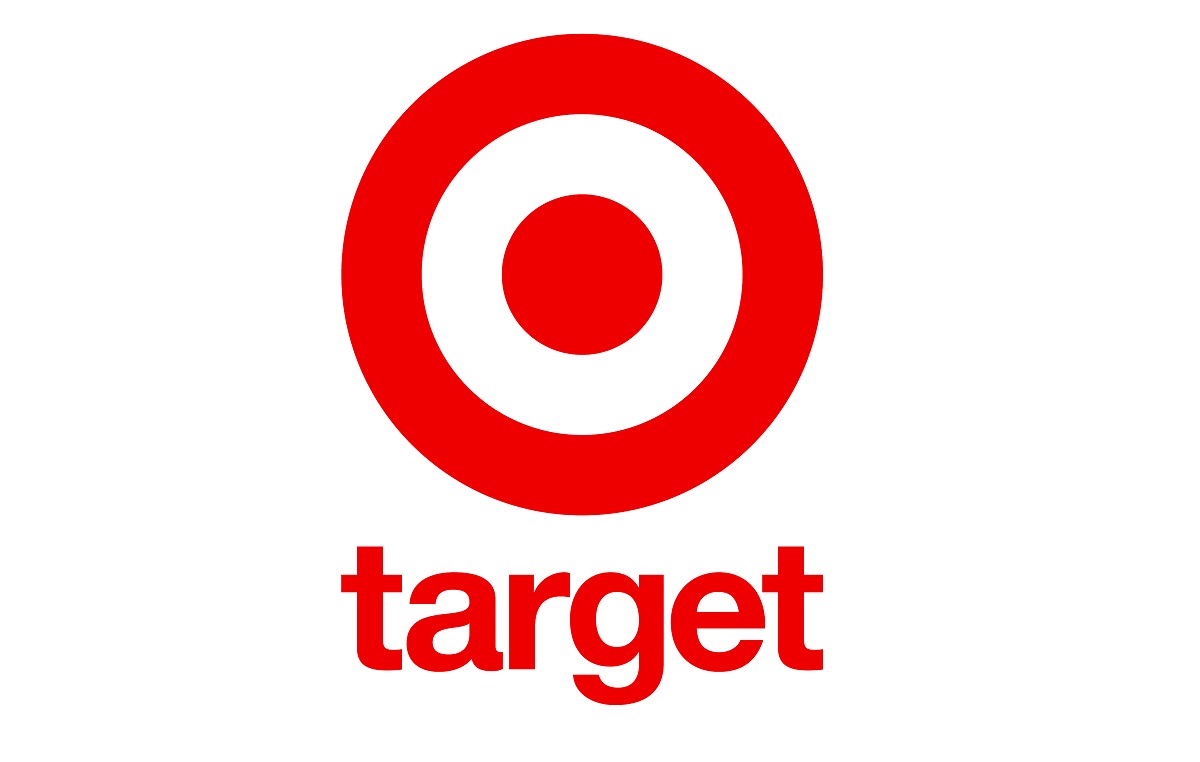Last Updated on June 14, 2023
Target Corporation, commonly known simply as Target, is an American big-box department store chain founded on June 24, 1902 by George Dayton.
The company previously went by several names, including Goodfellow Dry Goods (1902 -1903), Dayton’s Dry Goods Company (1903 – 1910), Dayton Company (1910 – 1962), Dayton Corporation (1962 – 1969), and Dayton-Hudson Corporation (1969 – 2000).

Target is headquartered in Target Plaza 1000, Nicollet Mall, Minneapolis, Minnesota. Target is currently ranked the 8th largest retailer in the United States. As of 2021, the department store chain had more than 1,920 stores spread throughout the U.S..
Some of its core products include food, furniture and bedding, clothing and accessories, beauty and health products, and electronics. The company also deals in jewelry, pet supplies, lawn and gardening equipment, and toys.
In this article, we focus our attention on the Target logo and examine how the emblem has changed since the company’s inception.
Target Logo Appearance
Logo Shape

Target’s logo sports a bullseye image that comes complete with two target circles, separated by a white boundary. The two target areas are in red.
Target’s logo also occasionally appears with the company’s brand name. The wordmark is commonly lowercased, executed in a bold red color, and set underneath the bullseye image.
Logo Color

Red and white are the main colors used for Target’s logo. The two target areas of the bullseye are in red. Red is also the common color used for the company’s brand name. White is the color for the boundary separating the two target areas, as well as for the background.
Logo Font
The font used for Target’s logotype is known as Helvetica Bold. Helvetica Bold is a bold weight of the widely-known typeface.

Also known simply as Helvetica, Helvetica Neue Haas Grotesk is a popular neo-grotesque sans-serif typeface designed in 1957 by Max Miedinger in conjunction with Eduard Hoffman. The font was developed based on the Akzidenz-Grotesk typeface that was famous around the 1890s.
Although originally unveiled by the Haas Type Foundry, Helvetica was later reissued by Mergenthaler Linotype Company. And while it was initially released in the regular weight, subsequent expansions to the typeface have yielded additional weights and styles. Examples include Helvetica Inserat, Neue Helvetica, Helvetica Now, and Helvetica Compressed.
Target Logo Symbolism
Symbolism of the Bullseye

Target Corporation chose the bullseye design for its logo as a reflection of its name. The bold, inner red circle on Target’s logo correlates with the red coloring found on a traditional archery target. And the utilization of three different circles conveys a sense of connectedness.
It symbolizes the unity and partnership that Target Corporation endeavors to foster with its stakeholders, which include its clients, employees, and suppliers.
Also, in numerology, three resonates with perfection, creativity, expansion, and distinctiveness. It wouldn’t be far-fetched to claim that Target might have had these qualities in mind while adopting the three circles on its logo.
Symbolism of the Wordmark

Target’s bullseye logo commonly appears as the company’s only visual identity. However, the emblem may often be accompanied by the wordmark.
As you may have guessed, the wordmark is mainly implemented to draw attention to the brand in question. The fact that the brand name is executed in lowercase letters speaks to Target Corporation’s friendliness and approachability.
Symbolism of the Colors
Red stands for passion, aggression, ambition, and energy, while white connotes purity, cleanliness, humility, and balance. These colors also blend seamlessly into a spectacular design. Target might have just utilized the color palette for aesthetic purposes, too.
Target Logo History
Although Target Corporation was founded in 1902, the company did not have a logo until 1962.
Target’s original logo was also a bullseye design. However, the emblem was more complex than the one currently used by the company. Instead of two target circles, it had three.
The color scheme alternated between white and red, with the innermost target area designed in red. However, the colors used were duller, which reflected negatively on the logo’s legibility.
The word ‘Target’ was executed across the bullseye. The wordmark was in solid black color and featured an italic font. Target Corporation used this logo until 1968 before embarking on its first major upgrade.
1968 – 1974

The 1968 logo looked nearly identical to the current one, except for two things – the colors were duller and the size was larger. This is also the only logo by Target Corporation that appeared exclusively without the company’s brand name.
However, Target released another logo version in 1968.
The alternative emblem maintained the same white and red color scheme. But it was way small, even smaller than the current logo. Also, this version of Target’s emblem featured the company’s brand name. The name was UPPERCASED and executed to the right of the bullseye design. Besides, the letterings in the wordmark were white but outlined in black.
1974 – 2004

Target’s logo got even smaller in 1974. But there was a reason for that. Although the company still loved its bullseye design, they decided to lay more emphasis on the wordmark portion of the logo.
The brand name was executed to the right of the logo, just as was in its previous iteration. However, the wordmark was now in solid black and appeared in larger fonts, making it exceptionally legible.
2004 – 2018

Target’s 2004-2018 logo iteration looked a lot like the current version. There were only two notable differences. First is that the colors used for the bullseye design were brighter. And secondly, the company’s wordmark appeared in UPPERCASE.
2018 – Present

Target’s current logo was unveiled in 2018. The company simply changed the letters in its 2004-2018 emblem to lowercase and made the colors used on the bullseye image a bit dull.
Interestingly, the duller color made the logo look more vibrant than its previous version. And the execution of the wordmark in lowercase portrayed Target as ‘friendly’.

